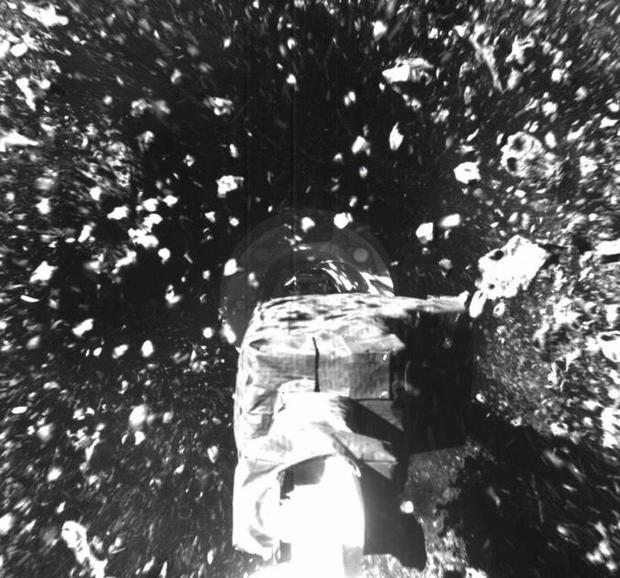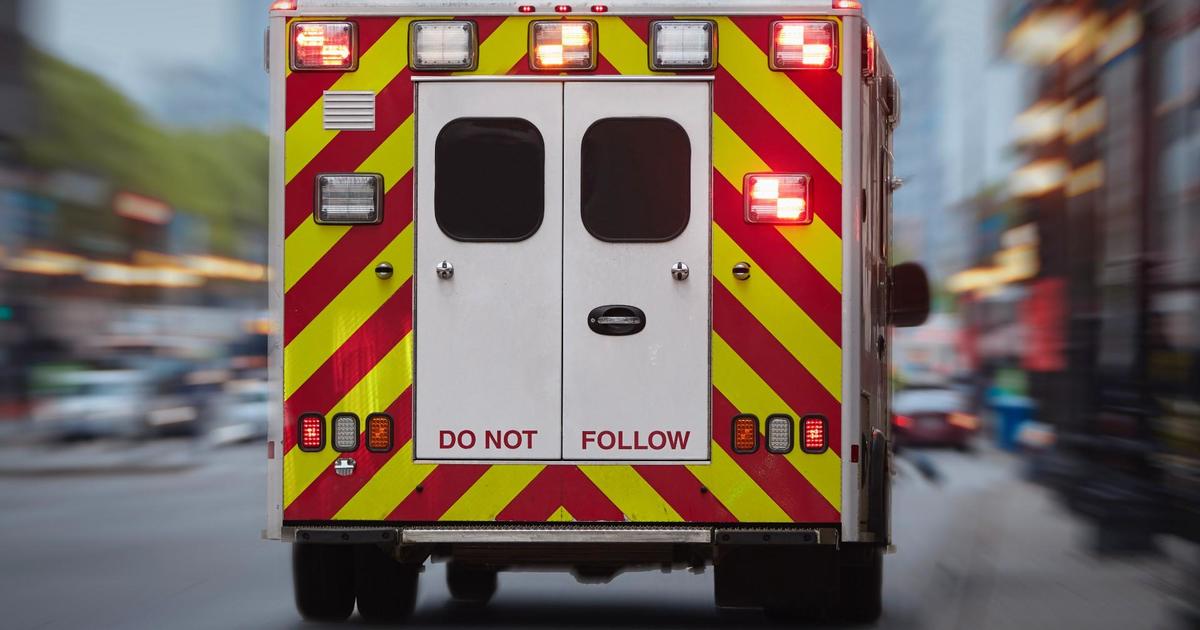Scientists confirm NASA probe captured a treasure trove of asteroid samples
New pictures from NASA's OSIRIS-REx spacecraft show the probe's sample collector is jam packed with small rocks, chips and soil captured from the surface of the asteroid Bennu on Tuesday. The samples are a scientific bounty far in excess of the minimum 60-gram amount needed for mission success, the chief investigator said Friday.
So much material was blown into the collector during the spacecraft's brief touch-and-go maneuver, in fact, that small rocks are jamming open a flap intended to seal material inside the sample collector, allowing a small amount of rock fragments and captured particles to escape into space.
"It's very exciting, very surprising, but overall excellent news," said Dante Lauretta, the mission's principal investigator. "We had a successful sample collection attempt, almost too successful. Material is escaping, and we're expediting (stowage of the collector) as a result of that."
Engineers originally planned a procedure over the weekend to "weigh" the collected material by putting OSIRIS-REx into a slow spin and comparing measurements made before and after the capture attempt to determine how much material had been blown into the probe's "Touch-and-Go Sample Acquisition Mechanism," or TAGSAM.
But that exercise was called off, and engineers now are pressing directly ahead with plans to safely stow the sample collector as soon as possible to prevent additional losses.
"I am highly confident that TAGSAM was successful, that it collected abundant mass, definitely evidence of hundreds of grams of material, and possibly more," Lauretta said. "My big concern now is that the particles are escaping because we were almost a victim of our own success."
"You've got to remember the entire system is in microgravity so it's behaving like a fluid, and we are moving the (robot) arm around to get these images," Lauretta added. "So that's imparting kind of random motion and particles are kind of diffusing out. They're not moving very fast ... but nonetheless, it's valuable scientific material."
Launched in September 2016, the OSIRIS-REx spacecraft reached Bennu in December 2018 and slipped into orbit around the asteroid, kicking off a year-and-a-half of detailed mapping and analysis to study the rubble-strewn body and to select the best possible site for collecting samples.
On Tuesday, after two dress-rehearsal approaches earlier this year, OSIRIS-REx dropped out of orbit, slowly descended to the surface and pressed the TAGSAM collector, mounted on the end of an 11-foot-long robot arm, into the rocky soil of a shallow crater known as Nightingale.
Compressed nitrogen gas fired out of the collector on contact, stirring up a blizzard of soil and small rocks, some of which presumably was blown into the collector's storage compartments. OSIRIS-REx then backed away and climbed back up into open space.
Mission success required a minimum collection of 60 grams of material, or about 2.12 ounces. To find out what, if anything, had been captured, the robot arm was commanded into a position allowing one of OSIRIS-REx's cameras to peer inside.
Scientists, engineers and flight controllers were stunned. They were able to see rocky material "occupying about 20 percent of the possible TAGSAM volume" visible to the camera, Lauretta said.
"At 20 percent of the volume, we're estimating possibly 400 grams of visible material," he said. "So that's consistent with a very high collection amount."
OSIRIS-REx was equipped with enough nitrogen to make three sample collection attempts if necessary. But given the amount of material actually captured, there are no plans to return to Bennu. Instead, the spacecraft will depart the area in March, after Earth and Bennu are in the proper relative positions, and head for home.
If all goes well, the samples, stored in a re-entry capsule, will be released to plunge back to a landing in Utah in September 2023.






